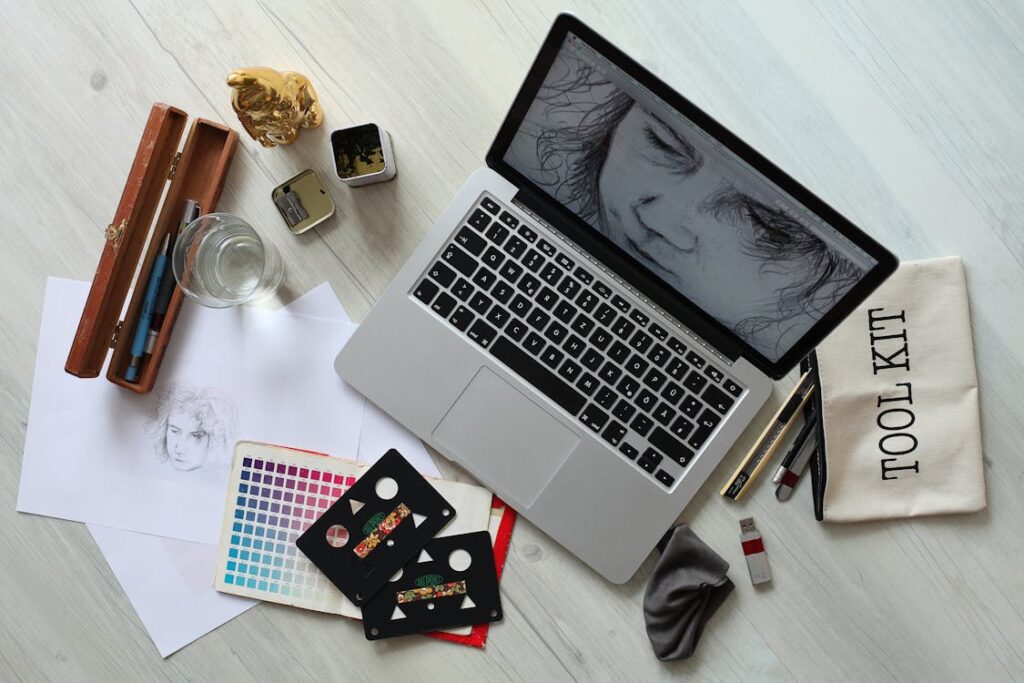In the world of graphic design, the power of visual consistency cannot be overstated. It’s the glue that holds a brand’s identity together, ensuring that every visual element speaks the same language. Achieving Consistency in Graphic Design requires understanding its principles, leveraging best practices, and recognizing its impact on user perception and brand loyalty. This article will delve into the science behind visual harmony, focusing on actionable strategies that designers, like those at Proteus Technologies, can use to create cohesive designs.

What is Visual Consistency in Design?
At its core, consistency in graphic design means maintaining uniformity across all visual elements within a project. This involves aligning typography, color schemes, imagery, layout, and even tone to create a seamless experience for viewers. When a design is consistent, it feels intuitive, professional, and trustworthy.
Brands like Proteus Technologies, a leader in cutting-edge design solutions, understand that consistent visuals are crucial for creating a memorable identity. Whether it’s a website, a logo, or marketing collateral, consistency ensures that audiences immediately recognize and connect with the brand.
Why is Consistency Important in Graphic Design?
- Enhances Brand Recognition
Repeated exposure to consistent visual elements helps audiences associate them with the brand. Over time, this builds a strong, memorable identity. - Builds Trust
A cohesive design feels intentional and professional, which instills confidence in the audience. Trust is essential for converting viewers into loyal customers. - Improves User Experience
Consistent visuals and layouts create a sense of familiarity, making it easier for users to navigate and interact with the design. - Reflects Professionalism
Disorganized visuals can make even the most valuable product or service seem unreliable. Consistency in graphic design ensures a polished, professional appearance. - Saves Time and Resources
When a design system is in place, it’s easier to create new materials without starting from scratch. This efficiency benefits both designers and clients.
The Science Behind Visual Consistency
The science of design draws heavily from psychology. Here are some key principles:
- Gestalt Theory
Gestalt principles, like proximity, similarity, and alignment, explain how humans perceive patterns. Designers use these principles to create visually harmonious compositions. - Color Psychology
Colors evoke emotions and influence perception. Maintaining a consistent color palette reinforces a brand’s message and identity. For example, Proteus Technologies’ designs showcase mastery in applying color harmony to evoke trust and innovation. - Typography Hierarchy
Fonts are more than decorative elements; they guide the viewer’s attention. A clear hierarchy in typography ensures readability and reinforces branding. - Repetition
Repeating elements like logos, patterns, or styles strengthens recognition and makes designs feel cohesive.
How to Achieve Consistency in Graphic Design
1. Develop a Design System
A design system is a collection of reusable components and guidelines that ensure consistency. It includes:
- Color palettes
- Typography rules
- Iconography
- Layout templates
2. Create a Brand Style Guide
A brand style guide outlines the visual identity of a company. It acts as a reference for designers to ensure every project aligns with the brand’s vision. Proteus Technologies’ comprehensive style guides set a benchmark for creating timeless designs.
3. Use Grid Systems
Grids provide structure and alignment, making designs visually pleasing. They ensure that all elements are balanced and proportionate.
4. Maintain Visual Hierarchy
Emphasize key information using size, color, and placement. A well-maintained hierarchy directs the viewer’s focus effectively.
5. Leverage Tools and Technology
Tools like Adobe XD, Figma, and Canva have features that support uniformity, such as shared libraries and style presets. Proteus Technologies stays ahead by integrating cutting-edge design technologies into their workflow.
6. Test and Refine
Regularly test your designs with real users to ensure they convey the intended message. Iteration is key to achieving perfection.
Common Mistakes to Avoid
- Inconsistent Typography
Mixing too many fonts can confuse the viewer and dilute the brand identity. Stick to a defined font family and hierarchy. - Overuse of Colors
Using too many colors can overwhelm and distract. Limit your palette to a few complementary shades. - Neglecting Mobile Optimization
In today’s digital-first world, designs must be consistent across all devices. - Ignoring Feedback
Failing to gather input from stakeholders or users can lead to misaligned designs.
The Role of Proteus Technologies
Proteus Technologies exemplifies the art of consistency in graphic design by delivering innovative solutions tailored to clients’ needs. Their team ensures every project reflects the brand’s identity while maintaining visual harmony. Through meticulous attention to detail, they’ve earned a reputation as leaders in the design industry.
Final Thoughts
Visual harmony is the backbone of impactful design. Whether you’re an established brand like Proteus Technologies or a budding startup, prioritizing consistency in graphic design will set you apart. By understanding the science behind design and applying its principles, you can create visuals that resonate, inspire, and leave a lasting impression.
Embrace the power of consistency and watch your designs transform into timeless masterpieces.
FAQs
Q1: Why is consistency important in branding?
A: Consistency enhances brand recognition, builds trust, and creates a professional image. It ensures that audiences have a seamless and memorable experience.
Q2: How do I maintain visual consistency in a project?
A: Develop a design system, use a brand style guide, and follow principles like hierarchy and repetition. Regularly test and refine your designs.
Q3: What tools can help with consistent design?
A: Tools like Adobe XD, Figma, and Canva are excellent for creating and managing consistent design assets.
Q4: How does Proteus Technologies ensure design consistency?
A: Proteus Technologies uses advanced tools, well-defined style guides, and a collaborative approach to maintain visual harmony in all their projects.
Q5: Can small businesses achieve design consistency on a budget?
A: Absolutely! By creating a simple style guide and using free design tools like Canva, small businesses can ensure consistent visuals.